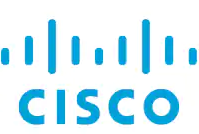The pandemic has brought unprecedented changes to the economy of our country and the world as well as how we work. Hybrid work models are increasingly becoming more of a reality with most of the world going through or having recently gone through the 4th Covid wave.
By Fady Younes, Cybersecurity Director at Cisco Middle East and Africa
Simultaneously there has also been an increase in the sophistication of the cyberthreat landscape. As the attack surface grows, detection becomes gradually difficult and dwell times rise, putting organizations at risk.
Protecting all devices employees use to remotely access company resources is critical. When users and devices are off-network, antivirus and other preventative measures alone are no match for advanced threats. Organizations need to be aware of when an attack is coming, rather than wait to respond to it after it reaches their endpoints, which is why endpoint operations with a built-in platform approach is becoming more beneficial. Security teams recognize that endpoint security is critical to enabling the digital workplace transformation.
Not only does Cisco have the knowledge and expertise in endpoint security, but it is also committed to constantly updating it to ensure it has robust protection, detection, and response to threats to provide a safer digital unified experience for users. With that in mind, Cisco highlights ways for organizations to overcome their endpoint security challenges.
Using multifaceted prevention techniques
One way to keep advanced threats from infecting endpoints is to use multifaceted prevention techniques that combine behavioral analytics, machine learning and signatures. This is especially important for remote users who use SaaS apps including online conferencing tools like Webex, Slack, Zoom and Microsoft Teams. Operating system processes and software vulnerabilities like the one found in Zoom for example, can be exploited by malware to compromise the endpoint.
With an exploit prevention engine, organizations can protect the devices being used to access these apps from Zero-day attacks that use memory injection on unpatched software vulnerabilities, fileless remote code execution and other malware attacks. Businesses can quickly uncover and stop ransomware before it can cause damage. And they can employ machine learning to analyze behavior like command-and-control and data exfiltration activities before it’s too late.
Achieving seamless integration alongside other security technologies
Some IT teams experience having their endpoints under constant attack through phishing attempts and exploits and would want to provide their team with insights, however due to the lack of visibility to endpoints, security teams might spend an inordinate amount of time attempting to eradicate threats and be subject to lateral movement ifthe type of malware that exists can’t be detected. Hence, it is important for organizations to have their endpoint security provide seamless integration with other security technologies and would help block, detect, investigate, and respond to threats across their entire environment – not just at the endpoints.
Integrating endpoints that block known threats automatically
Many security teams also lack tools that are refined and accurate that could help them identify the type of malware that could be on the endpoint for them to take the right action accordingly. In this situation, it is essential for organizations to choose endpoints that would be able to block known threats automatically using machine learning, exploit prevention, file reputation, antivirus, and a wide array of other attack prevention techniques that will stop both fileless and file-based attacks in their tracks – allowing their teams to have more efficacy.
Cisco acknowledges the importance in providing organizations with the ideal end point security that can provide them with better visibility, better efficacy and more efficiency across their security infrastructures. To enable a secure and smooth digital workplace transformation, Cisco has recently offered a new Remote Worker solution that unifies user and endpoint protection at scale, making it easy to verify, enable secure access and defend hybrid workers at anytime from anywhere.
 For more information click here
For more information click here
